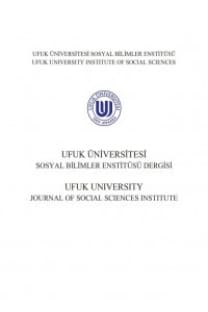CHATGPT’NİN ŞİRKETLERİN MALİ DURUMUNU TESPİT YETENEĞİ
Bu araştırmada ChatGPT’nin borsada halka açık olan şirketlerin finansal durum skorlarını ne kadar başarılı bir şekilde değerlendirdiği araştırılmıştır. Araştırmada Borsa İstanbul’da işlem gören 408 şirkete ait olan 2019, 2020 ve 2021 yıllarını kapsayan finansal veri kullanılmıştır. Bilanço hakkında sermaye yapısı skoru, gelir gider tablosu ile ilgili kârlılık skoru ve nakit akış tablosu ile ilgili nakit akış skoru kullanılarak finansal tabloların kapsamlı analizi hedeflenmiştir. ChatGPT tarafından ölçülen skorların ne kadar başarılı olduğunun anlaşılması için skor hesaplandıktan sonraki yılda belli performans kriterlerinin gelişimi incelenmiştir. Bu kriterler arasında şirketlerin takip eden dönemdeki hisse senedi performansları, 2022 yılındaki temettü verimleri ve 2022 yılında yapmış oldukları sermaye artışlarının piyasa değerine oranı kullanılmıştır. Çalışmada çapraz tablo analizi ve regresyon analizlerinden faydalanılmıştır. Araştırma bulgularına göre ChatGPT tarafından belirlenen kârlılık skoru, takip eden yıldaki temettü verimini; nakit akış skoru ise hem hisse senedi getirisini hem de temettü verimini açıklayabilmektedir. Bu çalışmada yapılan analizler gerekli verilerin sağlanması halinde, henüz gelişme aşamasında olan ChatGPT’nin başarılı bir şekilde borsada halka açık şirketlerin mali durumlarını tespit edebildiğini göstermektedir.
Anahtar Kelimeler:
ChatGPT, Borsa İstanbul, AI Araçları, NLP Araçları
ChatGPT's Ability to Determine Financial Status of Companies
In this research, it was investigated how successfully ChatGPT determined the financial status scores of publicly traded companies. Financial data covering 2019, 2020, and 2021 belonging to 408 companies traded on Borsa Istanbul were used in the study. A comprehensive analysis of the financial statements is aimed by using the capital structure score for the balance sheet, the profitability score for the income statement, and the cash flow score for the cash flow statement. In order to understand how successful, the scores measured by ChatGPT were, the status of specific performance criteria was examined in the year after the score was calculated. Among these criteria, the stock performance of the companies in the following period, the dividend yield in 2022, and the ratio of the capital increases they made in 2022 to the market value were calculated. Cross-table analysis and regression analysis were used in the study. According to the research findings, the profitability score could explain the dividend yield in the following year, and the cash flow score could explain both the stock return and the dividend yield. This study shows that ChatGPT, which is still under development, can successfully detect the financial status of publicly traded companies.
Keywords:
ChatGPT, Borsa İstanbul, AI Tools, NLP Tools,
___
- Agüero-Torales, M. M., Salas, J. I. A., & López-Herrera, A. G. (2021). Deep learning and multilingual sentiment analysis on social media data: an overview. Applied Soft Computing, 107, 107373.
- Dwivedi, Y. K., Kshetri, N., Hughes, L., Slade, E. L., Jeyaraj, A., Kar, A. K., ... & Wright, R. (2023). So what if ChatGPT wrote it? Multidisciplinary perspectives on opportunities, challenges and implications of generative conversational AI for research, practice and policy. International Journal of Information Management, 71, 102642.
- Efe, A. (2022). Yapay zekâ algoritmalarının denetim mesleği üzerindeki potansiyel etkileri. Yönetim Bilişim Sistemleri Dergisi, 8(2), 1-19.
- Grant, N., & Metz, C. (2022). A new chat bot is a ‘Code Red’ for Google’s search business. New York Times, https://www.nytimes.com/2022/12/21/technology/ai-chatgpt-google-search.html
- Hsieh, C. T. (1993). Some potential applications of artificial neural systems in financial management. Journal of Systems Management, 44(4), 12.
- Medsker, L., Turban, E., & Trippi, R. R. (1993). Neural network fundamentals for financial analysts. The Journal of Investing, 2(1), 59-68.
- Motiwalla, L., & Wahab, M. (2000). Predictable variation and profitable trading of US equities: a trading simulation using neural networks. Computers & Operations Research, 27(11-12), 1111-1129.
- Tetlock, P. C., Saar‐Tsechansky, M., & Macskassy, S. (2008). More than words: quantifying language to measure firms' fundamentals. The journal of finance, 63(3), 1437-1467.
- Trivedi, A., Kaur, E. K., Choudhary, C., & Barnwal, P. (2023). Should AI technologies replace the human jobs?. In 2023 2nd International Conference for Innovation in Technology (INOCON) (pp. 1-6). IEEE.
- Ünal, S., & Çömlekçi, İ. (2021). Borsa İstanbul alt pazar balonunun belirleyicileri. İnsan ve Toplum Bilimleri Araştırmaları Dergisi, 10(4), 3132-3155.
- Yu, B., Li, C., Mirza, N., & Umar, M. (2022). Forecasting credit ratings of decarbonized firms: comparative assessment of machine learning models. Technological Forecasting and Social Change, 174, 121255.
- Zaremba, A., & Demir, E. (2023). ChatGPT: unlocking the future of NLP in finance. Available at SSRN 4323643.
- ISSN: 2146-7676
- Başlangıç: 2011
- Yayıncı: Ufuk Üniversitesi
